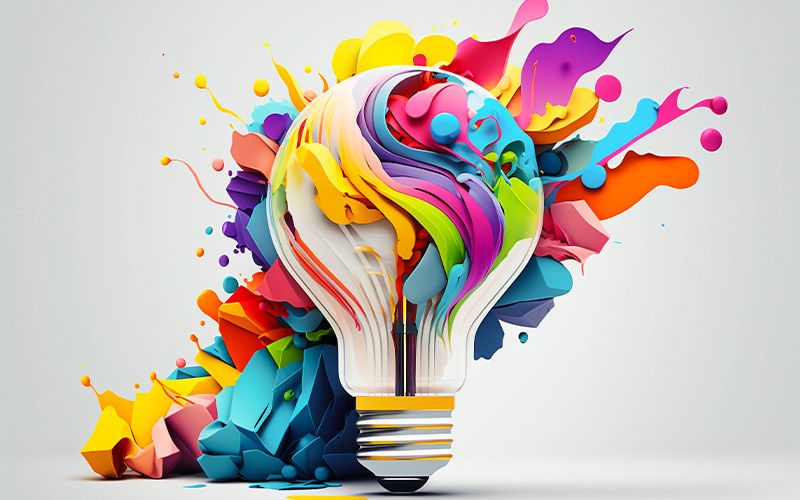
Graphic design is an art form that involves creating visual content to communicate ideas and messages to an audience. It is a creative process that involves combining typography, imagery, and color to convey information and evoke emotions. The impact of Graphic Designing is felt in many aspects of our lives, from the packaging of our favorite products to the logos of our favorite brands.
The artistry of Graphic Designing lies in its ability to bring ideas to life through visual communication. A graphic designer must possess not only technical skills but also creativity and an eye for aesthetics. They must be able to transform abstract concepts into tangible visuals that engage and inspire their audience.
One of the most important aspects of graphic design is its impact on human emotions. The use of color, typograph, and imagery can evoke a wide range of emotions, from excitement to calmness, from joy to sadness. A skilled graphic designer can use these tools to create designs that connect with their audience on a deeper level, leaving a lasting impression.
The impact of graphic design can be seen in many areas of our lives, from advertising and marketing to product design and packaging. The design of a product’s packaging, for example, can influence a consumer’s purchasing decision by creating a visual identity that is unique and appealing. A well-designed logo can also help to establish a brand’s identity and create a sense of trust and credibility among consumers.
In recent years, the impact of graphic design has expanded beyond traditional media to include digital platforms such as websites, mobile apps, and social media. As our world becomes increasingly digital, the importance of effective graphic design has only grown. A website that is poorly designed or difficult to navigate can drive away potential customers, while a well-designed website can create a positive user experience and increase engagement.
Additionally, graphic design is not only limited to commercial applications but also has a significant impact in the world of art and culture. Many artists use graphic design techniques to create unique and visually striking pieces of art. Graphic design also plays a crucial role in the world of publishing, where designers work to create book covers and layouts that capture the essence of a book’s content and attract potential readers.
Moreover, graphic design is a powerful tool for social change. It can be used to raise awareness about social issues and promote positive change in society. For example, a graphic designer can create a campaign that highlights the importance of recycling, or design a poster that promotes a charity event to raise funds for a good cause.
Lastly, the field of graphic design is constantly evolving, with new techniques, tools, and technologies emerging all the time. Keeping up with the latest trends and developments is essential for designers who want to remain competitive and relevant in this fast-paced industry. With its ability to communicate ideas and emotions through visual media, graphic design is a truly exciting and dynamic field that offers endless possibilities for creativity and innovation.
Furthermore, the impact of graphic design can also be seen in the realm of user interface design. The way a website or app is designed can greatly influence how users interact with it, and ultimately affect its success. Graphic designers work closely with user experience designers to create interfaces that are intuitive, easy to use, and visually appealing.
In addition, the importance of visual storytelling cannot be underestimated. In today’s digital age, where content is consumed at lightning speed, visual storytelling has become an essential tool for capturing and retaining people’s attention. Graphic designers are well-equipped to tell stories through visuals, creating narratives that are not only visually engaging but also emotionally compelling.
It is worth noting that graphic design is not just about creating pretty pictures; it is also about problem-solving. Graphic Designing work with clients to understand their needs and objectives, and then create designs that effectively communicate their message. They must consider factors such as audience, brand identity, and usability when developing their designs.
Finally, the impact of graphic design extends far beyond the visual realm. Good design can have a positive impact on people’s lives, whether it is by improving the usability of a product or by enhancing the aesthetic experience of a space. Graphic designers have the power to create designs that not only look good but also serve a practical purpose.
In conclusion, the artistry and impact of Graphic Designing are vast and varied. From commercial applications to social change, from art to user interface design, the possibilities are endless. As the world becomes increasingly digital, the importance of effective graphic design will only continue to grow, making it an exciting and rewarding field for those who have a passion for creativity and innovation.